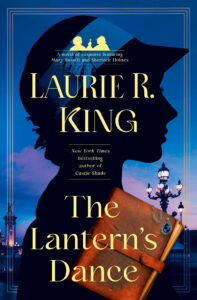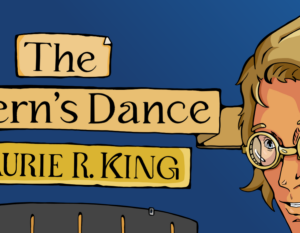Why we Love Publicity and Marketing
 As we’re on the edge of being able to get our hands on an actual finished copy of The Lantern’s Dance (Feb 13) I thought this was a good time to look at one of the last pieces in the process of getting a book from the author’s mind to the reader’s eyes: Marketing and Publicity.
As we’re on the edge of being able to get our hands on an actual finished copy of The Lantern’s Dance (Feb 13) I thought this was a good time to look at one of the last pieces in the process of getting a book from the author’s mind to the reader’s eyes: Marketing and Publicity.
So, the book is finished—really, absolutely finished, all those drafts and copyedits and proof-stage checks and even the tweaks. It has a gorgeous cover, the final proofs have been sent off to the UK and audio publishers—now what?
Now is the time to let people know the book is coming.
Traditional publishers like mine—Penguin Random House—are complicated machines. Ideally, its parts mesh smoothly together, from the editor who first lays her eyes on the proposal to the warehouse workers who drop the cases of hardcovers onto trucks bound for the booksellers. Most of the people you’ll never hear from—certainly never see—but for you, a reader who might be curious about how it all comes together, these are the main yet unseen players:
The agent. NOT employed by the publishing house, the agent is the writer’s partner from beginning to end. Agents pay their rent by taking a percentage—generally 15%—of their client’s income, those advances (before publication), rights (sales to foreign, large-print, audio, etc) and royalties (money earned after a book is published) that keep us turning out the words.
The editor. She (usually she) is the writer’s chief contact within the publishing house. She buys the book, either from a writer who has been with the publishing house before or, more rarely, from a new writer whose agent finds a way to pique the editor’s interest. This generally happens when the agent and editor have worked together before, and the editor trusts the agent to know what she’s looking for, and not to waste her time. The editor negotiates the contract, helps shape the book, finds a place for the book in the house’s schedule, and oversees everything to do with the book and the author.
Publicity and Marketing. Here’s where things get a little more slippery. Very basically, the publicist handles the author’s public face, and mostly arranges for the free(ish) things like author signings, podcasts, book reviews, and the like. Marketing, on the other hand, is tasked with outreach for the book, including those things that costs the house money, such as ads, online promotions, bookstore swag, and events other than the author’s appearances. Marketing generally takes on social media, works closely with book clubs and the sales department, and keeps a close eye on the data side of things. And does things like the pre-order bonus giveaway, a snippet of which is shown below.
In actual experience, especially when, like me, you’ve known and worked with the teams for years, the division of labor isn’t quite so clear. My publicist chimes in on discussions run by Marketing, as Marketing offers suggestions for bookstore outreach.
At the moment, down to the last few weeks before publication, everyone is cc’d on most letters, as we find the best way to let people know that The Lantern’s Dance is on its way.
***
Pre-ordering is really, really helpful. Get The Lantern’s Dance from: Bookshop Santa Cruz (signed); Poisoned Pen Books (signed—and with their exclusive bonus artwork); Bookshop.org (supporting Indie booksellers); Barnes & Noble; or Amazon. And, for any of these or Audible, you can sign up here to get the Penguin Random House US pre-order bonus artwork!

This is a teaser for the publisher’s bonus art. To get the whole thing, sign up with Random House–thanks to their Marketing department!
Already pre-ordered from Audible. Now what?
Fill out the form linked to.
L.